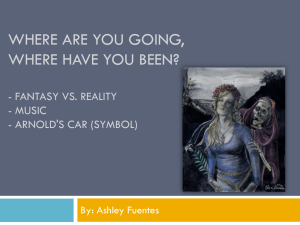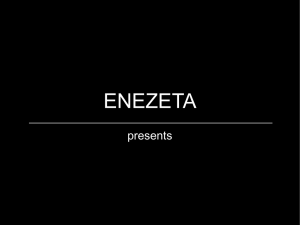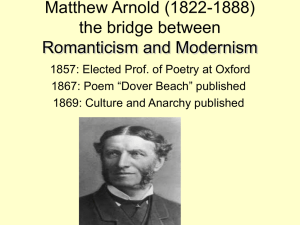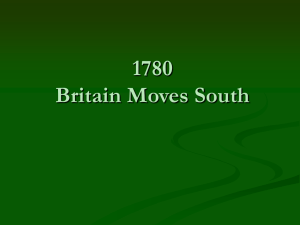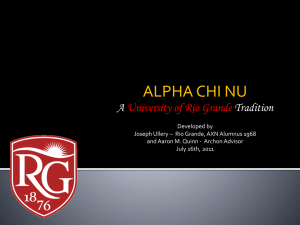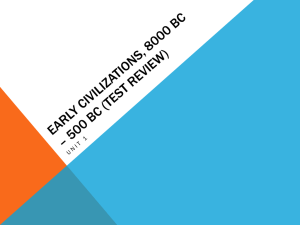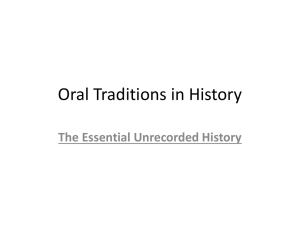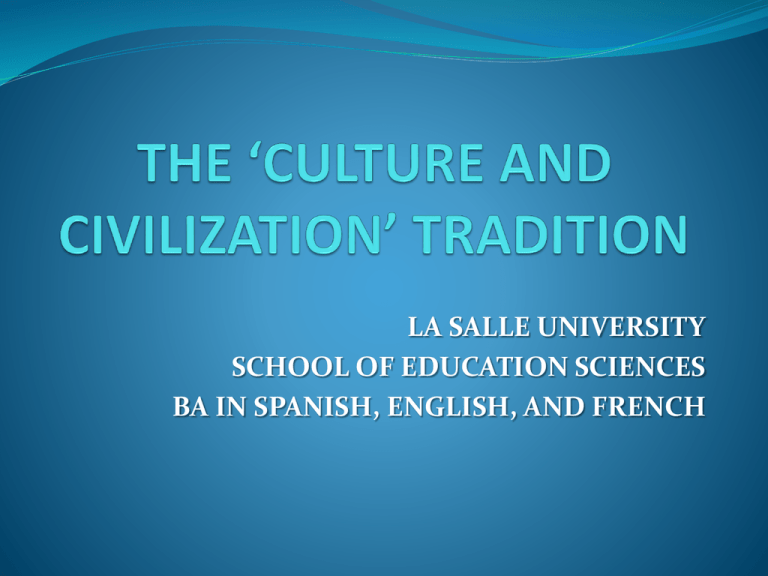
LA SALLE UNIVERSITY
SCHOOL OF EDUCATION SCIENCES
BA IN SPANISH, ENGLISH, AND FRENCH
INTRODUCTION
The popular culture of the majority has always been a concern of powerful
minorities. Those with political power have always thought it necessary to police the
culture of those without political power.
In the nineteenth century, however, there is a fundamental change in this relationship.
Those with power lose, for a crucial period, the means to control the culture of
the subordinate classes.
Two factors are crucial to an understanding of these changes: Industrialization and
urbanization. Industrialization and urbanization had redrawn the cultural map. No
longer was there a shared common culture, with an additional culture of the powerful.
Now, for the first time in history, there was a separate culture of the subordinate classes
of the urban and industrial centres.
Each of these developments in different ways threatened traditional notions of cultural
cohesion and social stability. One threatened to weaken authority through the
commercial dismantling of cultural cohesion; the other offered a direct challenge
to all forms of political and cultural authority.
Matthew Arnold
Arnold’s significance is that he inaugurates a tradition, a particular way of seeing popular
culture, a particular way of placing popular culture within the general field of
culture. The tradition has come to be known as the ‘culture and civilization’ tradition.
For Arnold (1960), culture means four things:
(i) the ability to know what is best (body of knowledge)
(ii) what is best (becoming perfect )
(iii) the mental and spiritual application of what is best
(iv) the pursuit of what is best
Anarchy/popular culture is used to refer to Arnold’s conception of the supposedly
disruptive nature of working-class lived culture. The social function of culture is to
police this disruptive presence: the ‘raw and uncultivated . . . masses’.
His division of society into Barbarians (aristocracy), Philistines (middle class) and
Populace (working class) seems to suggest that if we imagine the human race existing on
an evolutionary continuum, the aristocracy and middle class are further along the
evolutionary continuum than the working class.
Matthew Arnold
Arnold thinks like this because he believes that:
- the development of industrial capitalism has given power to men as uneducated for
power.
- a working class which has lost ‘the strong feudal habits of subordination and
deference’ is a very dangerous working class.
- it is the function of education to restore a sense of subordination and deference
to the working class.
Against such ‘anarchy’, culture recommends a mixture of culture and coercion: the
State. Arnold’s cultured State is to function to control and curtail the social, economic
and cultural aspirations of the working class until the middle class is sufficiently cultured
to take on this function itself.
Culture is not the main concern of Arnold’s work; rather the main concern is
social order, social authority, won through cultural subordination and deference.
Despite this, or perhaps because of it, his influence has virtually mapped out the way
of thinking about popular culture and cultural politics that dominated the field
until the late l950s.
Leavisism
According to F. R. Leavis and the Leavisites, the twentieth century is marked by
an increasing cultural decline because the increasing spread of a culture of
‘standardisation and levelling down’ from the 19th C had continued and been
worsened. It is against this process and its results that ‘the citizen must be trained
to discriminate and to resist’.
Leavisism is based on the assumption that ‘culture has always been in minority
capable of keeping the subtlest and most fragile parts of tradition. What has
changed is the status of this minority. No longer can it command cultural
reverence, no longer is its cultural authority unchallenged. Leavis is nostalgic for a
time when the masses exhibited an ‘unquestioning assent to authority’.
Mass civilization and its mass culture pose a subversive front, threatening ‘to
land us in irreparable chaos’. Leavisism proposes ‘to introduce into schools a
training in resistance [to mass culture]’; and outside schools, to promote a
‘conscious and directed effort . . . [to] take the form of resistance by an armed and
active minority’.
Leavisism
Leavisism isolates certain key aspects of mass culture for special discussion.
Popular fiction, for example, is condemned for offering addictive forms
of ‘compensation’ and ‘distraction’. It habituates mass culture to weak
evasions, to the refusal to face reality at all.
The danger of cinema involves surrender, under conditions of hypnotic
receptivity, to the cheapest emotional appeals.
The popular press is described as ‘the most powerful and pervasive deeducator of the public mind’, and radio is claimed to be putting an end to
critical thought.
Advertising and how it is consumed is Leavisism’s main symptom of cultural
decline because it degrades the language and the emotional life of the
whole language community, reducing ‘the standard of living’.
Leavisism
What is interesting about their account of the past is what it reveals about their
ideal future. The golden age was not just marked by cultural coherence, but
happily for the Leavisites, a cultural coherence based on authoritarian and
hierarchical principles.
They also claim that the quality of work has also deteriorated with the loss of
the organic community. As a result of industrialization, the experience of work
has deteriorated to such an extent that workers are actually ‘incapacitated by their
work’. Given such a situation, people turn to mass culture for compensation
and passive distraction; they become junkies addicted to ‘substitute living’.
The Leavisites fail to mention, as Williams (1963) remarks, ‘the penury, the petty
tyranny, the disease and mortality, the ignorance and frustrated intelligence
which were also among its ingredients’. What we are presented with is not a
historical account, but a literary myth to draw attention to the nature of our
supposed loss.
Mass culture in America: the post-war debate
Andrew Ross (1989)
Following the Second World War, America experienced the temporary success of a
cultural and political consensus supposedly based on liberalism, pluralism and
classlessness. Until its collapse in the agitation for black civil rights, the
formation of the counterculture, the opposition to America’s war in Vietnam, the
women’s liberation movement, and the campaign for gay and lesbian rights, it was
a consensus dependent to a large extent on the cultural authority of American
intellectuals.
Bernard Rosenberg
He argues that the material wealth and well-being of American society are being
damaged by the dehumanizing effects of mass culture. His greatest anxiety is that,
‘At worst, mass culture threatens not merely to cretinize our taste, but to brutalize our
senses while paving the way to totalitarianism’. Its author is not capitalism, but
technology. Therefore America cannot be held responsible for its emergence or for its
persistence.
David White
He observes that the critics of mass culture take a very negative view of contemporary
American society’. He maintains that critics romanticize the past in order to
castigate the present.
Mass culture in America: the post-war debate
Dwight Macdonald
Mass culture undermines the vitality of high culture. It is a parasitic culture,
feeding on high culture, while offering nothing in return. Without a cultural elite,
America is under threat from a Gresham’s Law of culture: the bad will drive out the good;
the result will be not just a homogeneous culture but a ‘homogenized culture.
Ernest van den Haag
Mass culture is the inevitable outcome of mass society and mass production: in
many individual tastes, the mass produced article violates each in other respects.
A mass produced article, while reflecting nearly everybody’s taste to some extent, is
unlikely to embody anybody’s taste fully.
He also suggests another reason: the temptations offered by mass culture to high
culture. He uses Dante as an illustration. Although Dante may have suffered religious
and political pressures, he was not tempted to shape his work to make it appeal to an
average of tastes.
Van den Haag differs from the ‘cultural nostalgics’, who use romanticized versions of the
past to condemn the present, in his uncertainty about the past.
Mass culture in America: the post-war debate
Edward Shils
Shils rejects completely the erroneous idea that the twentieth century is a period
of severe intellectual deterioration and that this alleged deterioration is a
product of a mass culture. As far as Shils can see the problem is not mass culture,
but the response of intellectuals to mass culture.
To Shils, American culture is divided into three cultural ‘classes’, each embodying
different versions of the cultural: ‘“superior” or “refined” culture’ at the top, ‘“mediocre”
culture’ in the middle, and ‘“brutal” culture’ at the bottom (206). Mass society has
changed the cultural map, reducing the significance of ‘superior or refined culture’, and
increasing the importance of both ‘mediocre’ and ‘brutal’ (209).
However, Shils does not see this as a totally negative development: ‘It is an indication of a
crude aesthetic awakening in classes which previously accepted what was handed
down to them or who had practically no aesthetic expression and reception’.
The culture of other people
It is easy to be critical of. the ‘culture and civilization’ tradition’s approach to
popular culture, but, for more than a century it was undoubtedly the dominant
paradigm in cultural analysis. Indeed, it still forms part of certain areas of British and
American life.
The principal problem with the ‘culture and civilization’ tradition is its working
assumption that popular culture always represents little more than an example of
cultural decline and potential political disorder.
Bennett points out that the ‘culture and civilization’ tradition looked down from high
culture to what it saw as the commercial wastelands of popular culture, seeking only
confirmation of cultural decline, cultural difference, and the need for cultural
deference, regulation and control.
The anxieties of the ‘culture and civilization’ tradition are anxieties about social and
cultural extension: how to deal with challenges to cultural and social exclusivity.
As the nineteenth century receded, and those traditionally outside ‘culture’ and ‘society’
demanded inclusion, strategies were adopted to incorporate and to exclude. In short, it is
a tradition that demanded, and expected, two responses from the ‘masses’ cultural
and social difference and cultural and social reverence.
Bibliography
Storey, John (2009). Cultural Theory and Popular Culture. An Introduction (5th edition).
London: Pearson-Longman.
www.pearsoned.co.uk/storey



